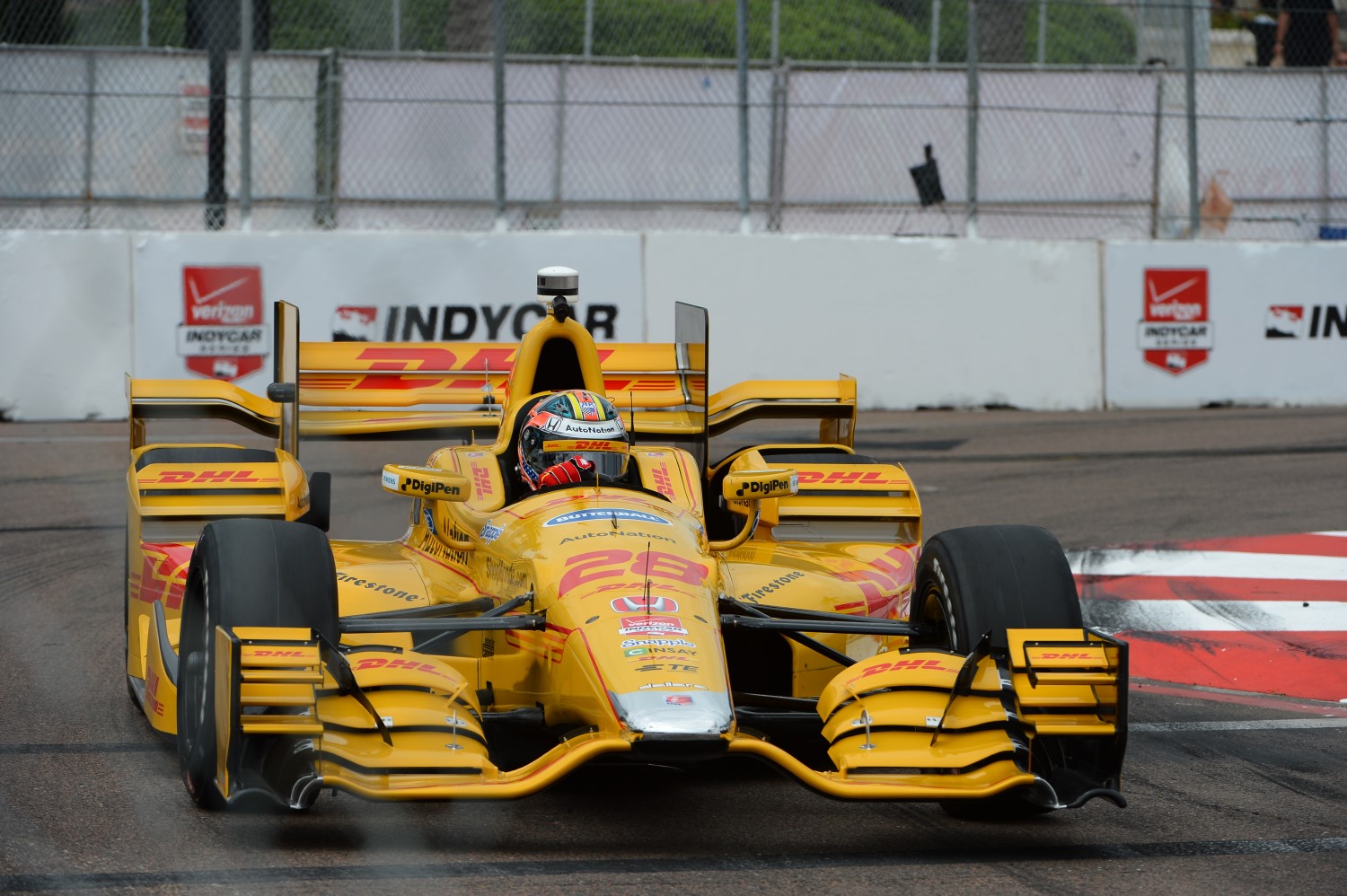IndyCar allows Honda to strengthen its Aero Kit
 |
| Honda to strengthen their front wings. |
After experiencing issues with Aero Kits creating debris in the season-opening Verizon IndyCar Series race on March 29, Honda has been granted permission by INDYCAR to strengthen and reinforce parts of its kit, Steve Eriksen, Chief Operating Officer and Vice President of HPD, told FOXSports.com.
"We've talked to INDYCAR about it and have made a proposal to update a few of the key parts with some additional strengthening as a temporary countermeasure and as a permanent countermeasure to deliver replacement parts with an even higher resistance to car-to-car contact," Eriksen said. "This would be immediate and INDYCAR has approved that.
"The amount of car-to-car contact and subsequent shedding of Aero Kits was very disappointing. We've already put some countermeasures in place. You hope to avoid car-to-car contact but you know it is going to happen at some point and – with the road and street courses coming up – we wanted to put some countermeasures in place quickly and that is what we are doing.
"I would call it bonded reinforcements – almost like a brace. The Aero Kits have an extensive testing regimen required by INDYCAR – load testing and testing the components in certain ways. All of our pieces to the kit passed all that testing first time through so we've met all the safety requirements that exist. And we're happy to work with INDYCAR to develop additional safety requirements where there are gaps in the safety requirements."
A technical bulletin was issued to the Honda teams last Friday and the Aero Kits will be reinforced before the series resumes this weekend at NOLA Motorsports Park for Sunday's Indy Grand Prix of Louisiana.
The Grand Prix of St. Petersburg on March 29 was the first race that Honda and Chevrolet used Aero Kits – a complicated collection of add-on parts and pieces that increase downforce and bring a different look to each manufacturer. But there was plenty of contact on the street course and that led to a lot of those parts breaking on and littering the track.
One piece even flew over the safety fence in Turn 10 and struck a spectator, who suffered a fractured skull but is expected to recover.
"With the extra downforce you can dive deeper into the corners and that gives you some additional capabilities," Eriksen said. "Unfortunately you need to do that in a capable and clean manner because the bits that were strewn across the track were purely as a result of car-to-car contact."
One of the unintended consequences of the Aero Kit additions was flexing on the Dallara front wing – a stock part used on both Chevrolet and Honda cars.
"Both us and our competitor are required to bolt our front wing flaps and bits onto the stock Dallara main-plane and that stock Dallara main-plane was designed for a lower level of downforce than we are putting out now so there is quite a bit of flexing going so that is another countermeasure," Eriksen said. "Dallara has issued a short-term fix for the main-plane that is a countermeasure and a long-term fix that will replace the existing main-plane with a stronger, stiffer one.
"It wasn't surprising because we saw it in wind tunnel testing but it was disappointing because we don't have any control over that piece. It's a spec part. All we can do is bolt our bits onto there and provide the data to how that is working to INDYCAR for their consideration."
After Chevrolet driver Tony Kanaan finished third at St. Petersburg, he said much of the responsibility for debris belongs to the drivers because they should be running into each other. HPD's Eriksen agrees with that assessment.
"Avoiding contact should be one everyone's list but they are getting their heads around how they can drive and utilize the new performance that has been given to them," Eriksen said. "We are working on addressing the strength issues that allow the occasional case where you do have contact and looking forward to the revisions that Dallara make on INDYCAR's behalf to the main-plane so we don't have so much flexing going on."
Ryan Hunter-Reay of Andretti Autosport was the highest finishing Honda driver at St. Petersburg with a seventh-place finish. Another Honda driver, Jack Hawksworth, finished eighth for A.J. Foyt Racing.
"Teams like Foyt and to some extent Schmidt Peterson were able to get their heads around it fairly quickly," Eriksen said. "There was a lot of experimentation going on so we learned a lot of what to do and what not to do with the car. A big factor in being quick had to do with platform control so the teams that got that under control quickly were able to benefit. The ones that struggled with that had a harder time so we are working to improve that for NOLA.
"We have one race of experience under our belts so everybody has had time to contemplate where they want to go next and I expect everybody to hit the track with their next set of ideas and setup approaches on the track. It will be interesting to see who in the week off did the right kind of analysis to move forward." Bruce Martin/Fox Sports
